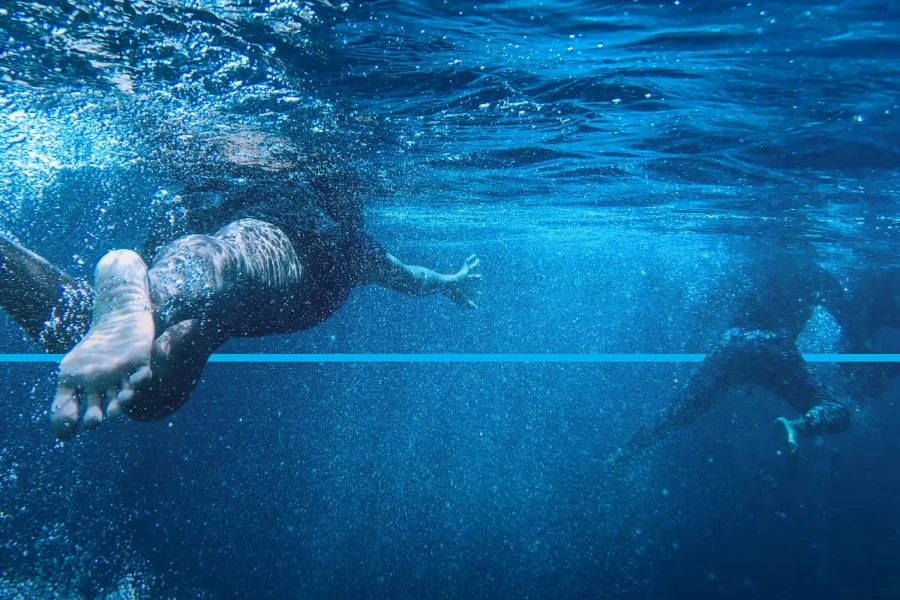We know that exercise can be the last thing you want to do when you’re dealing with painful joints, but did you know that exercise can actually help reduce pain in the long run? Strengthening your muscles, improving balance and getting fitter can do wonders for your physical health and it can reduce the pain from arthritis. That being said, low impact activities which are gentle on the joints can be especially beneficial because you still reap the benefits of exercise without any pressure.
Did you know that around 90% of your body weight is supported by water when you swim? This almost weightless environment allows you to exercise without putting excess pressure on your joints, which can help you work out without the discomfort and pain you may experience with some more fuller impact activities.
Because swimming is low impact it’s an excellent activity for people with low mobility or joint pain. Swimming gives you a full body workout and combines strength training with aerobic activity to increase muscle strength and get your heart pumping.
But what if you’re not a confident swimmer – or if you never learned to swim at all? It’s never too late to learn, so read on for our tips!
Where Can You Swim?
It’s autumn in the U.K., so even if you’re lucky enough to live by the sea chances are you’re not going to be taking a dip for at least eight months! Not to worry, because there are loads of swimming pools all over the country which you can use for a small fee. Many gyms will have a pool with different sessions throughout the day.
If you fancy a swim, just look for the ‘general swim’ or ‘adult swim’ sessions on the pool timetable. You can usually just turn up and pay when you get there, but check the website information as there may be special measures in place during the pandemic. Some pools also offer women only sessions and there may also be senior sessions for the over 60s.
Enjoy a more social swimming experience? There are a lot of adult swim clubs and aerobic water classes which you can join. Water aerobics is a great way to get the most out of a fun, social group exercise session while still protecting your joints by staying in a weightless environment. You can even do aqua running, which takes up to 50% of the weight off your joints so you can get moving easily. Take a look to see what your local leisure centre has to offer.
What If I Can’t Swim?
It’s never too late to learn! Many swimming pools offer adult lessons for complete beginners, so you can learn how to swim from an experienced, licensed teacher even if you’ve never swum a stroke in your life.
Many people learn to swim in later life for a variety of reasons, so you’ll be in good company. The swimming pool will usually have a range of noodles, boards and other accessories which can help you learn to swim by keeping you afloat as you kick.
What if you can swim a bit but you’re not confident enough to go to the pool by yourself? Many leisure centres offer a variety of lessons for different levels and they will also cater to different levels within the same class, so just talk to your teacher about what you want to achieve from the class.
Swimming Gear
What do you need before you get in the pool? You may not require everything on this list, but they can help you get your bearings in the pool and help you feel confident in the water.
It’s important to prioritise quality over style when it comes to swimming costumes. Some costumes look great, but they’re more built for lounging on the beach than swimming in chlorinated water. Make sure you buy it from a reputable source and that it’s the right size. If you’re buying online, the reviews can be a good indicator of whether or not the swim suit is worth buying.
Goggles can help protect your eyes from that nasty chlorine sting and they help you see underwater, which can be handy when you’re navigating your way around the pool. Wearing goggles helps you keep in a straight line, they help you see where you are in the pool so you know how much longer you have to swim and they’re great if you happen to lose something! Using goggles will give you a little bit of confidence and can make all the difference to your enjoyment of the pool. Goggles are fairly inexpensive and can be bought from online retailers, sports companies and many swimming pools.
It’s no secret that chlorine isn’t great for your hair – especially if it happens to be dyed blonde! A swimming cap also helps keep your hair out of your face so you don’t end up resurfacing and looking like Cousin It! Swimming caps are inexpensive and can be bought from most sports retailers, online directories and swimming pools.
Many swimming pools will have noodles, paddle boards and other equipment which can help keep you afloat as you practice kicking or breaststroke legs. They may only be available for swimming lessons, however, so if you want to practice in your spare time it can be worth buying your own.



